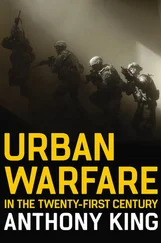While von Manstein was focused on Katukov, Vatutin was forming a new tank army for his next operation. On 20 January, General-leytenant Andrei G. Kravchenko took command of 6th Tank Army, comprised of Volkhov’s 5 MC and Alekseev’s 5 GTC; it was not a full-strength formation, totalling just 160 tanks and 50 self-propelled guns. {10} Volkhov’s 5 MC had recently been reequipped with Lend-Lease M4A2 Sherman tanks. {11} On 26 January, Vatutin attacked the German VII Armeekorps with the 40th Army but his main effort failed to achieve a breakthrough. Surprisingly, a supporting attack against the over-extended XXXXII Armeekorps achieved a minor breakthrough and Kravchenko sent a mobile group under General-major Mikhail I. Savelev from 5 MC to exploit the gap. Savelev’s mobile group consisted of the 233rd Tank Brigade (equipped with Sherman tanks), a regiment of Su-76, a motorized rifle battalion and an anti-tank battery. {12} However, Kravchenko was unable to send the rest of the 5 MC after Savelev, since Vatutin was concerned by Breith’s counter-attack against 1 TA and ordered Kravchenko to send part of the corps to reinforce Katukov. Consequently, Kravchenko’s 6 TA was reduced to barely 100 tanks just as it was achieving a major success.
Meanwhile, Konev renewed his offensive against Wöhler’s AOK 8 on 25 January and overwhelmed the over-extended 389.Infanterie-Division, then quickly committed Rotmistrov’s 5 GTA (20 TC, 29 TC) with 323 tanks. Rotmistrov’s armoured wedge also forced the burnt-out 14.Panzer-Division to retreat. After 24 hours of fighting, Rotmistrov was able to squeeze the 20 TC and 29 TC through a gap in the German lines and they pushed west against negligible resistance. Wöhler mounted a quick counter-attack with the 11.Panzer-Division (15 tanks and 15 assault guns) which temporarily succeeded in severing the line of communications behind the two advancing Soviet tank corps, but lacked the strength to do any more. {13} By 27 January, Rotmistrov’s armour was rapidly pushing west and close to linking up with Savelev’s mobile goup. The only hope to reverse this dangerous situation was Major Glässgen’s I.Pz.Rgt.26 which had only arrived from Germany two weeks before, and it was quickly attached to XXXXVII Panzerkorps to cut off Rotmistrov’s spearheads. Although the battalion had not yet seen combat, it already lost a dozen tanks disabled with mechanical problems and the 75km march to its assembly area cost it another Panther destroyed by engine fire and four broken down. {14} Clearly, the ‘teething problems’ associated with Zitadelle were still not resolved.
At 0600 hours on 28 January, the I.Pz.Rgt.26 attacked northward with 61 Panthers to Kapitanovka to link up with Major von Siver’s Panthers from 11.Panzer-Division. In complete disregard for combined arms tactics, the attack was begun without infantry, artillery, air support or even reconnaissance, so Glässgen’s inexperienced Panther crews moved blindly into a meeting engagement with an enemy of unknown strength. As it turned out, Konev had moved strong anti-tank units into this sector and General-major Vasily I. Polozkov’s 18 TC was in the process of reopening the road. The German attack was a four-star fiasco, with the Panthers being engaged repeatedly in flank by anti-tank ambushes; Major Glässgen and two of his company commanders were killed, 10 Panthers were destroyed and 18 damaged. Another 16 Panthers broke-down from engine defects, leaving I.Pz.Rgt.26 with just 17 operational Panthers. While Polozkov’s 18 TC lost 29 T-34s in the action, he succeeded in reopening the road to Rotmistrov’s two tank corps that were driving west. {15}
On 28 January, Podpolkovnik Ivan I. Proshin was pushing his 155th Tank Brigade forward as fast as possible, as the advance guard of 20 TC. By the afternoon, his lead tanks had reached the town of Zvenigorodka, which was a German supply base. After scattering rear area troops, Proshin secured the town and around 1800 hours the lead Sherman tanks from Savelev’s mobile group arrived, which created a link-up between 6 TA and 5 GTA. {16} A total of 59,000 German troops from the VII and XXXXII Armeekorps were now isolated in the Korsun pocket, comprising SS- Wiking , four infantry divisions (57, 72, 88 and 389) and two Sturmgeschütz-Abteilungen (228, 239). The German forces within the Korsun pocket were quickly redeployed for all-around defence and were redesignated as Gruppe Stemmerman, after General der Artillerie Wilhelm Stemmermann, commander of XXXXII Armeekorps. Amazingly, Hitler refused to allow Gruppe Stemmermann to conduct a breakout and ordered the Luftwaffe to begin an airlift and von Manstein to mount a ground rescue operation. It was Stalingrad all over again, on a somewhat smaller scale. Von Manstein was determined not to repeat the mistakes of Stalingrad, but it would take several days to organize a relief effort and, in the meantime, he had to create a new frontline in the vacuum south of the Soviet encirclement. Both Konev and Vatutin began pushing infantry units into the corridor to hold the ring around Gruppe Stemmermann, while the 29 TC advanced to expand the ring before the Germans could rush units to the new front.
Von Vormann’s XXXXVII Panzerkorps was able to organize a small relief effort fairly quickly with 11.Panzer-Division, which had 22 Panthers, three Pz IV and 13 assault guns, but just 1,000 Panzergrenadiers. A small Kampfgruppe from 13.Panzer-Division could also participate. On the morning of 1 February, von Vormann attacked and his Panthers easily sliced through two Soviet rifle divisions which had not yet dug in. In six hours, 11.Panzer-Division advanced 31km over the frozen terrain and reached the Shpolka River at Iskrennoye, less than 20km from Gruppe Stemmermann. However, when the Panthers attempted to cross a bridge over the river it collapsed, bringing the advance to a halt. Von Vormann was able to bring up pioniers to build a bridge for his StuG-IIIs, but AOK 8 lacked material to build a 60-ton pontoon bridge for the Panthers. Hitler also intervened in von Vormann’s relief operation, ordering him to wait since he was transferring the 24.Panzer-Division (which only had 17 tanks and 14 StuG IIIs) from the Nikopol bridgehead to reinforce him. Since this division was nearly 300km away and had to move via its own tracks, this was a remarkably stupid idea that helped to delay XXXXVII Panzerkorps when it had a brief window of opportunity. Instead, Hitler should have helped von Vormann to get bridging material forward, but the Führer was not interested in pontoon bridges. Instead, von Vormann paused at Iskrennoye, which allowed the Soviets to move the 29 TC and 49th Rifle Corps to block any further advance. Exacerbating von Vormann’s problems, temperatures rose to 5 degrees C (41 degrees F) which caused the ground to thaw, reducing mobility. Although von Vormann would continue to try and advance toward Gruppe Stemmermann for the next two weeks, he achieved no further significant advances.
German effort to relieve the Korsun Pocket, 1–16 February 1944.
Meanwhile, von Manstein did not immediately cancel Operation Vatutin against Katukov’s 1 TA, but by 30 January he ordered Hube to transfer Breith’s III Panzerkorps to mount a second relief operation from the southwest, which was designated Operation Wanda . Due to the muddy roads caused by the thaw and the difficulty extracting armoured units from the ongoing battles, it took longer than expected to assemble Breith’s III Panzerkorps for Operation Wanda . Breith’s corps initially consisted of the 16. and 17.Panzer-Divisionen, Schwere Panzer-Regiment Bäke and s.Pz.Abt.506 with a total of 105 tanks (48 Panthers, 41 Pz IV and 16 Tigers) and 21 assault guns. On the morning of 4 February, both Panzer-Divisionen attacked side-by-side, with two infantry divisions in support. Although the Soviet 104th Rifle Corps put up tough resistance and mines hindered the German advance, Breith’s two Panzer-Divisionen were able to advance nearly 19km on the first day. Vatutin committed Kravchenko’s 6 TA and an anti-tank brigade to block Breith’s panzers on the Gniloy Tikich, which was normally a minor obstacle but now widened by rain and melting snow. By the second day of Wanda , Breith’s forces ran into Soviet armour and indecisive tank skirmishing cost both sides vehicles. Despite reinforcements from 1.Panzer-Division and LSSAH , Breith’s advance was brought to a halt for a week. The Soviets had learned that the way to halt a German armoured drive was to constantly attack both flanks of a salient, which forced the Germans to divert troops to prevent from being cut off. Although this cost Kravchenko’s 6 TA many of its tanks, Vatutin received regular replacements – unlike the Germans. Furthermore, the lack of engineer support made it difficult to get heavy tanks across the Gniloi Tikich and Bäke’s panzers ran out of ammunition and fuel by the second day of the operation. Breith blamed the mud for reducing his mobility, but this tended to be a standard German excuse whenever a poorly-planned operation began to unravel. In Russia and the Ukraine, there was always mud.
Читать дальше
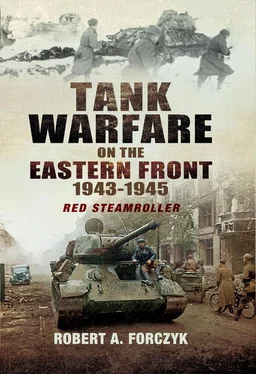



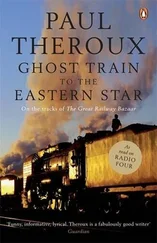
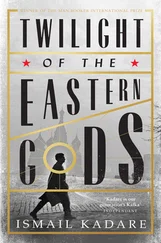
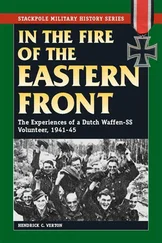

![John Stieber - Against the Odds - Survival on the Russian Front 1944-1945 [2nd Edition]](/books/405234/john-stieber-against-the-odds-survival-on-the-russian-front-1944-1945-2nd-edition-thumb.webp)


